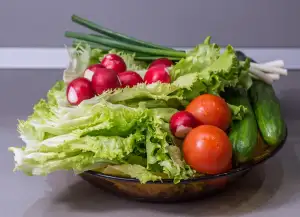Unveiling the Sweet Symphony of Honeycomb: A Culinary Delight for Food Enthusiasts

- The hexagonal wonder: Exploring the unique structure of honeycomb
- The making of honeycomb: Unraveling the intricate process by bees
- Nutritional benefits of honeycomb: A powerhouse of goodness
- Culinary uses of honeycomb: From sweet treats to savory delights
- Honeycomb-inspired recipes: Get creative with this natural delicacy
- Honeycomb in popular culture: Its significance and symbolism
- Sustainability of honeycomb production: Supporting bee populations
Honeycomb, a fascinating creation of bees, is a culinary delight that has captivated food enthusiasts for centuries. This intricate structure, made up of hexagonal cells, is not only visually stunning but also serves as the perfect vessel for storing honey. The process by which bees create honeycomb is nothing short of remarkable, showcasing their ingenuity and precision. Join us on a journey to uncover the sweet symphony of honeycomb and explore its culinary wonders.
The hexagonal wonder: Exploring the unique structure of honeycomb
Honeycomb, with its intricate hexagonal pattern, is a marvel of nature's design. Each cell fits perfectly together, creating a symmetrical masterpiece. This remarkable structure not only showcases the ingenuity of bees but also serves a practical purpose.
The hexagonal shape allows for maximum efficiency in space utilization. Bees are meticulous architects, constructing each cell with precision to ensure optimal storage capacity. The uniformity of the hexagons ensures that no space is wasted, allowing bees to store ample amounts of honey and pollen.
Moreover, the interlocking nature of the cells provides strength and stability to the honeycomb structure. The walls of each cell support one another, forming a robust framework that can withstand the weight of stored honey and the constant activity within the hive.
Scientists have marveled at this natural engineering feat for centuries. Mathematicians have studied the hexagonal pattern and concluded that it is the most efficient way to divide a surface into equal-sized compartments. The honeycomb's design maximizes storage while minimizing material usage—a testament to nature's brilliance.
Beyond its functional benefits, the honeycomb's mesmerizing pattern has captivated artists and designers alike. Its geometric beauty has inspired architectural structures, artwork, and even fashion designs. It serves as a reminder that nature's creations can be both aesthetically pleasing and highly functional.
Next time you come across a piece of honeycomb, take a moment to appreciate its unique structure—the result of millions of tiny bees working in perfect harmony. This natural wonder reminds us that beauty can be found even in the smallest details and offers us a glimpse into the extraordinary world of bees' craftsmanship.
The making of honeycomb: Unraveling the intricate process by bees
The making of honeycomb is a fascinating and intricate process carried out by bees. It starts with worker bees collecting nectar from flowers and storing it in their honey stomachs. Back at the hive, they regurgitate the nectar into other worker bees' mouths, where enzymes are added to begin the transformation process. These bees then deposit the nectar into hexagonal wax cells, which they build using wax glands on their abdomen. The bees continue to fan their wings over the cells to evaporate excess moisture, resulting in the thickening of the nectar into honey. Finally, once the honey is ready, the bees seal each cell with a wax cap, preserving it for future consumption. This intricate process showcases the incredible teamwork and ingenuity of these tiny creatures.
Nutritional benefits of honeycomb: A powerhouse of goodness
Honeycomb is not only a delectable treat, but it also packs a punch when it comes to nutritional benefits. This natural wonder is a powerhouse of goodness, rich in vitamins, minerals, and antioxidants. It contains essential nutrients like calcium, iron, and magnesium that are vital for maintaining strong bones and overall health. Additionally, honeycomb is known to boost the immune system and promote digestive health. Its natural enzymes aid in digestion and can soothe gastrointestinal issues. So indulge in this sweet delight guilt-free, knowing that you are nourishing your body with nature's goodness.
Culinary uses of honeycomb: From sweet treats to savory delights
Honeycomb-inspired recipes: Get creative with this natural delicacyHoneycomb is not only a delicious treat on its own, but it also serves as a versatile ingredient that can elevate any dish. Its unique texture and sweet, floral flavor make it a perfect addition to both sweet and savory recipes.
For those with a sweet tooth, honeycomb can be used to create delectable desserts such as honeycomb ice cream, honeycomb cheesecake, or even honeycomb chocolate bark. The crunchy texture of the honeycomb adds a delightful surprise to these treats.
If you prefer savory dishes, try incorporating honeycomb into your cooking. It can be used as a topping for salads, adding a touch of sweetness and crunch. You can also use it as a glaze for roasted meats or vegetables, giving them a caramelized finish.
For the adventurous food enthusiasts, why not experiment with honeycomb-infused cocktails? Muddle small pieces of honeycomb into your favorite drinks to add an extra layer of complexity and sweetness.
The possibilities are endless when it comes to using honeycomb in your culinary creations. Let your imagination run wild and explore the unique flavors and textures that this natural delicacy has to offer.
Honeycomb in popular culture: Its significance and symbolism
Honeycomb holds a special place in popular culture, symbolizing sweetness, abundance, and harmony. In ancient civilizations, honeycomb was associated with divine wisdom and fertility. It has been depicted in art and literature as a symbol of nature's perfection and the intricate balance of the universe. Honeycomb also plays a significant role in religious rituals and celebrations, representing prosperity and blessings. Its rich symbolism continues to inspire artists, writers, and chefs alike, reminding us of the beauty and complexity found in nature's creations.
Sustainability of honeycomb production: Supporting bee populations
Sustainability of honeycomb production is crucial for supporting bee populations. Bees play a vital role in pollination, ensuring the growth of fruits, vegetables, and flowers. To protect these invaluable creatures, it is essential to practice responsible beekeeping methods. This includes providing bees with ample food sources, avoiding the use of harmful pesticides, and promoting biodiversity in their habitats. By prioritizing the well-being of bees, we can ensure the continued production of honeycomb and preserve these remarkable insects for generations to come.
In conclusion, honeycomb is a culinary marvel that deserves our attention and appreciation. Its unique hexagonal structure, intricate production process by bees, and numerous nutritional benefits make it a true powerhouse of goodness. From sweet treats to savory delights, honeycomb can be used in a variety of culinary creations. So why not embrace this natural delicacy and let its sweet symphony tantalize your taste buds? Indulge in the culinary wonders of honeycomb and discover a whole new world of flavors and textures.
Published: 24. 11. 2023
Category: Food



